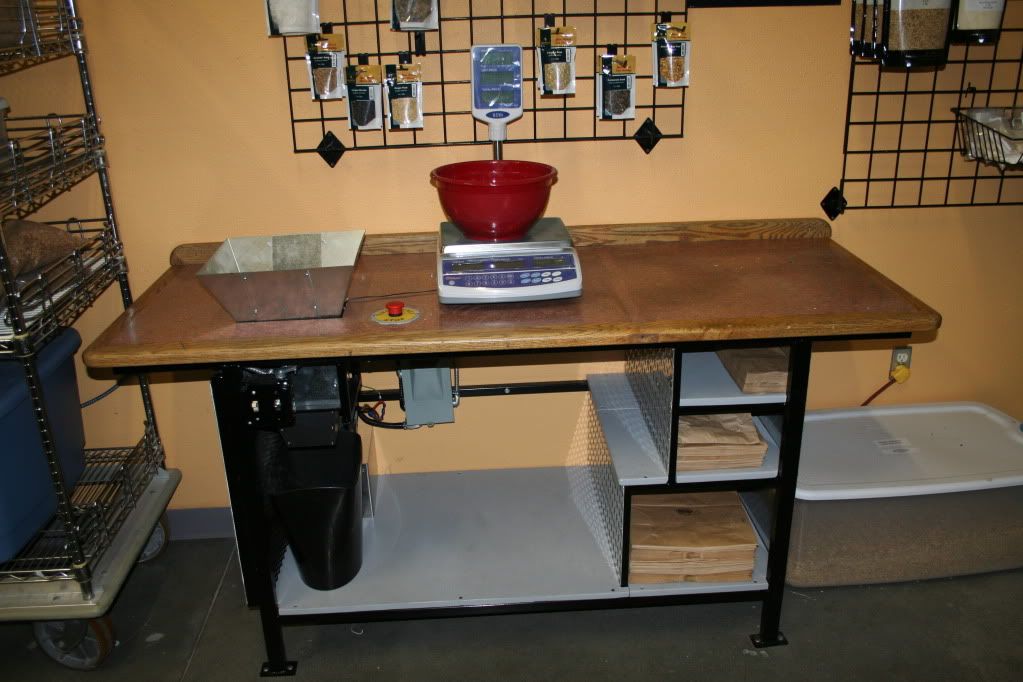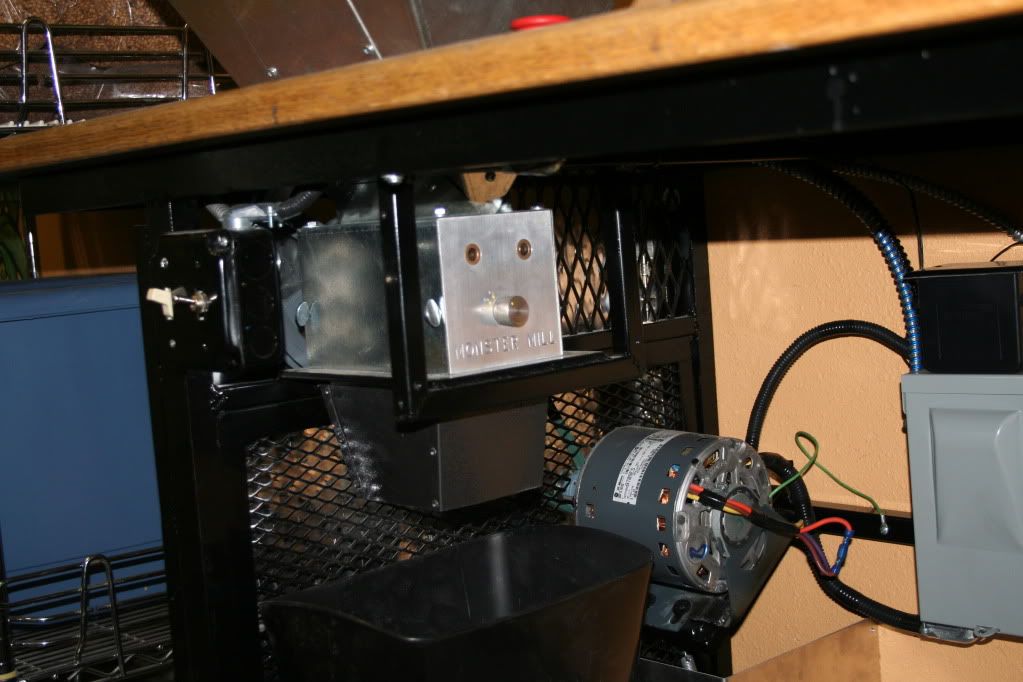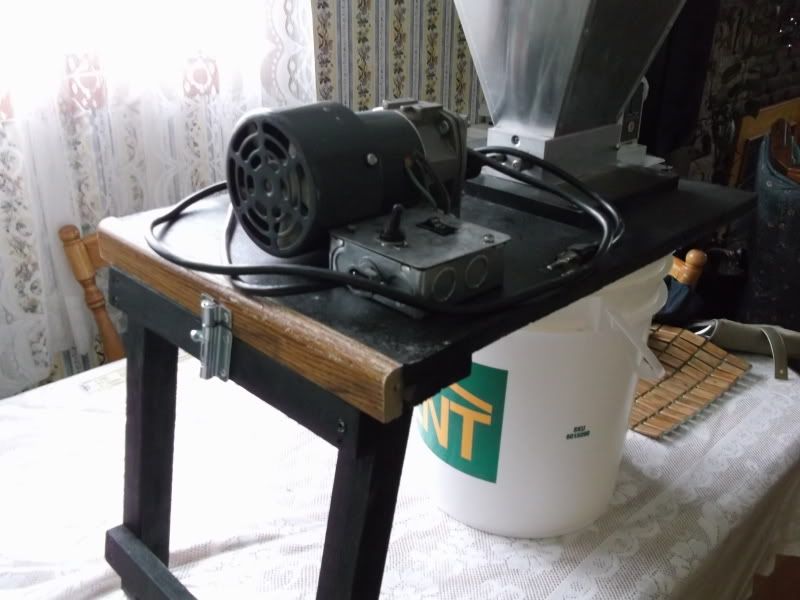Nwalesmith
Well-Known Member
I just bought a new monster mill for a DIY mill project. I am looking for recommendations on motors. I would prefer to not use pulleys if at all possible. Suggestions/advice welcome!!!
Thanks all.
Thanks all.

yes I tried it with my MM3-2.0 and it did not have enough torque
I ended with a 1000rpm motor and a 2"x9.75 sheeve running at 230RPM
the 1/3HP blower motors don't have enough torque to start with grain in hopper but has no problem once running
Thanks guys, care to share a picture of your rigs? Also, I have the MM3, should I be concern about the torque...?
yes I tried it with my MM3-2.0 and it did not have enough torque
I ended with a 1000rpm motor and a 2"x9.75 sheeve running at 230RPM
the 1/3HP blower motors don't have enough torque to start with grain in hopper but has no problem once running




Hey-
Mine is installed in a pull-out shelf inside my brew table, at the right height so that it rests on the paint bucket when extended.
.
I started out on my MM3-1.5 with a bodine 1/6 hp 170 RPM 45 inch*lbs motor and found it worked great for dry grain. If I however conditioned my grain it would bind (this is at a mill gap of .035), so I geared it down to 89.5 RPM and 90 inch*lbs... still bound.
I switched to a 1/4 hp 115 RPM 120 inch*lbs bodine motor, and problem solved. If I have to I can still gear it down, but 240 inch*lbs of torque is a lot to deal with.
I should comment as well that the grain bills that bound had a lot of wheat and cara pills in them... I have yet to try rye, which I hear is hard to mill as well.
One more option is putting a 20µF (based on 3/8 HP ), 400-450 V capacitor across one winding and the motor will run at reduced torque.As long as you have access to 240V / 3 phase, this thing should be unstoppable on a malt mill.....
I used the 177RPM from Surplus Center.

Enter your email address to join: